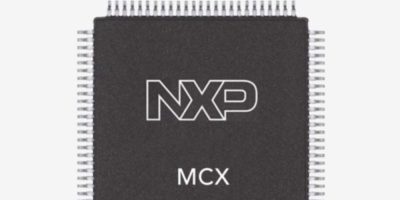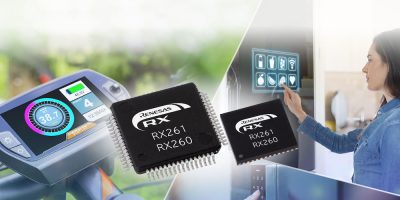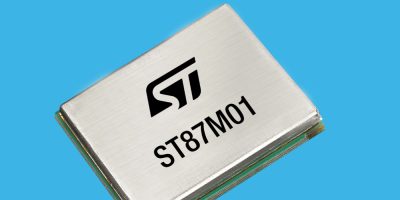Renesas has introduced two semiconductor solutions for the rapidly growing IO-Link market: the CCE4511 four-channel IO-Link master IC and the ZSSC3286 – IO-Link ready, dual-channel resistive sensor signal conditioner IC.
IO-Link is a digital communication protocol that is used most widely in industrial automation applications. As a standardised technology, it enables seamless communication between sensors, actuators, and other devices in an automation system. IO-Link has become increasingly popular in recent years due to its ability to provide real-time data and diagnostics and its ease of use and compatibility with existing systems. It also regulates & reduces wiring, enhances data availability, and offers remote configuration and monitoring.
Renesas’ new CCE4511 is the industry’s first four-channel master IC for the IO-Link protocol with 500mA driving current for each channel and provides numerous advantages over two-channel master devices. It saves energy, reduces PCB size and requires fewer external components than competitive offerings.
The CCE4511 offers a high-voltage interface along with overvoltage detection and over-current protection. To improve application performance, an integrated IO-Link Frame Handler is provided, which automates most of the lower layer communication tasks. This reduces the microcontroller (MCU) loads significantly, thus gaining more performance for other tasks, and/or allowing designers to use a less expensive MCU. The CCE4511 has an ambient operating temperature of up to 125º C for harsh industrial environments. It also supports detection of ready pulses from IO-Link devices, which is required to fulfil the newly defined IO-Link Safety System Extension.
The ZSSC3286 is a dual path sensor signal conditioning IC (SSC) for highly accurate amplification, digitisation, and sensor-specific correction of sensor signals. It supports IO-Link connectivity with an integrated IO-Link stack running the IO-Link Smart Sensor Profile for digital measuring and switching sensors. The device is suitable for bridge and half-bridge sensors, as well as external voltage-source elements. Digital compensation of the sensor offset, sensitivity, temperature drift, and non-linearity is accomplished via a 32-bit Arm-based math core running a correction algorithm with calibration coefficients stored in a non-volatile, reprogrammable memory. The programmable, integrated sensor front-end allows optimally applying various sensors for a broad range of applications.
ZSSC3286 is the first sensor signal conditioner with an integrated IO-Link compliant stack. Traditionally, an additional microcontroller has been used to run the stack. The ZSSC3286 obsoletes the MCU, saving board space and costs. It also offers two parallel ADCs with up to 24-bit resolution, a measurement scheduler for optimised performance, and advanced system diagnostic functions.
Renesas has combined both the CCE4511 and the ZSSC3286 with other offerings from Renesas’ broad line of embedded processing, analog, power and connectivity solutions to create the IO-Link Sensor Winning Combination. Winning Combinations are technically vetted system architectures from mutually compatible devices that work together seamlessly to bring an optimised low-risk design for a faster time to market. Renesas offers more than 400 Winning Combinations with a wide range of products from the Renesas portfolio to enable customers to speed up the design process and bring their products to market more quickly.
https://www.renesas.com/win







